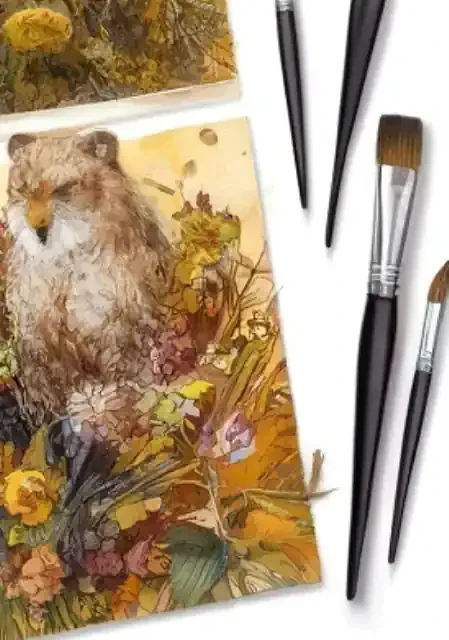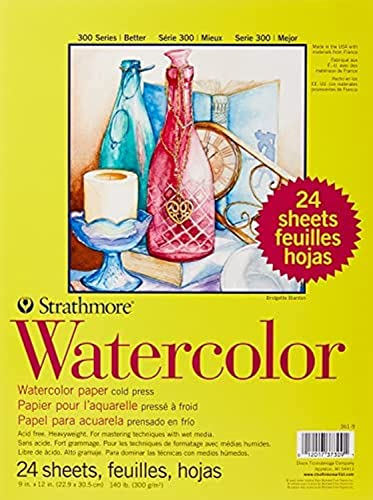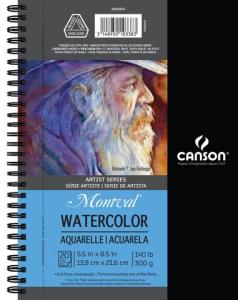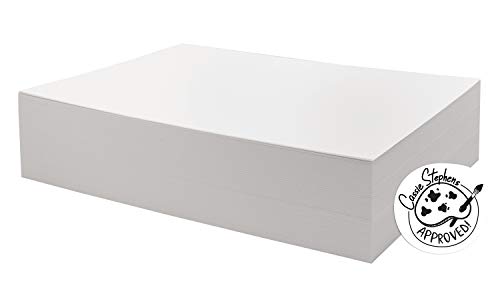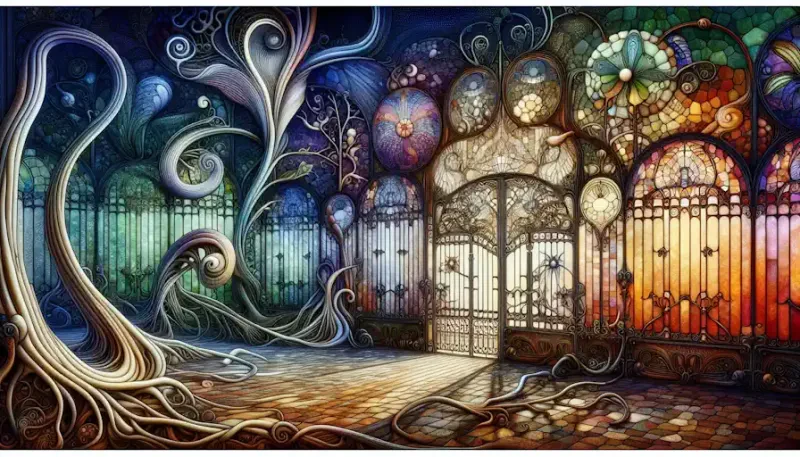Introduction
Watercolor painting, with its ethereal charm and expressive possibilities, has captivated artists for centuries. Its unique blend of transparency, fluidity, and luminosity offers a mesmerizing quality that continues to inspire creators across the globe. From delicate washes to intricate details, watercolor allows for a wide range of artistic expression, making it a beloved medium among both amateurs and seasoned professionals.
However, achieving mastery in watercolor requires more than just artistic skill—it demands a keen understanding of the materials at hand. Selecting the right paints and brushes is paramount to realizing one's creative vision. Each pigment and brush type possesses its own characteristics, influencing the outcome of the artwork in subtle yet significant ways. In this guide, we'll delve into the world of watercolor paints and brushes, offering insights and tips to help you navigate this enchanting medium with confidence. Whether you're a novice eager to explore the possibilities or an experienced painter seeking to refine your technique, understanding the importance of selecting the right materials is the first step towards unlocking the full potential of watercolor painting.
Understanding Watercolor Paints
Watercolor paints, with their luminous hues and fluid nature, are the lifeblood of any watercolor artist's palette. To harness their full potential, it's essential to grasp the intricacies of their composition, forms, and pigments.
1. Composition and Forms:
Watercolor paints typically consist of pigments suspended in a water-soluble binder, such as gum arabic. This formulation allows for effortless blending and layering, characteristic of watercolor techniques. Paints are commonly available in two main forms: tubes and pans. Tubes offer concentrated pigment that can be diluted with water to achieve various consistencies, while pans are solid blocks of dried paint that can be activated with a wet brush.
2. Pigments and Characteristics:
Watercolor pigments vary widely in their properties, including transparency, permanence, and lightfastness. Transparency refers to the paint's ability to allow light to pass through, creating luminous washes and layers. Permanence indicates the paint's resistance to fading over time, ensuring the longevity of your artwork. Lightfastness ratings provide insight into how resistant the pigment is to fading when exposed to light over extended periods. Understanding these characteristics empowers artists to make informed choices when selecting paints for their projects.
3. Overview of Popular Brands:
Numerous watercolor paint brands grace the shelves of art supply stores, each with its own unique characteristics and qualities. From traditional brands with centuries of history to innovative newcomers pushing the boundaries of the medium, the options can be overwhelming. Some renowned brands include Winsor & Newton, Daniel Smith, Schmincke, and M. Graham. Each brand offers a distinct range of colors, formulations, and qualities, catering to the diverse needs and preferences of artists.
Winsor & Newton: Known for their wide range of colors and reliable quality, Winsor & Newton paints are favored by artists worldwide. Their Professional Watercolor range boasts a vast selection of vibrant hues with excellent transparency and lightfastness.
Daniel Smith: Celebrated for their extensive range of unique pigments, Daniel Smith watercolors offer unparalleled vibrancy and granulation. Artists appreciate the brand's commitment to innovation and sustainability, with many colors made from environmentally friendly sources.
Schmincke: With a legacy spanning over a century, Schmincke watercolors are revered for their exceptional lightfastness and brilliance. The Horadam Aquarell line features finely ground pigments suspended in high-quality binders, ensuring smooth application and rich color payoff.
M. Graham: Renowned for their use of honey as a binder, M. Graham watercolors exhibit unrivaled flow and saturation. The brand's commitment to using only the finest pigments and ingredients results in paints with superior vibrancy and longevity.
Exploring the offerings of these and other brands allows artists to discover paints that align with their artistic vision and preferences, setting the stage for endless possibilities in watercolor painting.
Exploring Brush Types
Watercolor brushes are essential tools that wield immense influence over the outcome of a painting. Understanding the different types of brushes available, along with their unique characteristics, is crucial for artists looking to master the art of watercolor.
1. Introduction to Brush Types:
Watercolor brushes come in a variety of shapes and sizes, each designed to serve specific purposes and techniques. Some common brush types include:
Round Brushes: Versatile and widely used, round brushes feature a pointed tip and a round ferrule, making them ideal for detailing, washes, and intricate work.
Flat Brushes: With a rectangular-shaped ferrule and squared-off tip, flat brushes are well-suited for broad washes, straight lines, and bold strokes.
Mop Brushes: Characterized by their soft, rounded bristles and large size, mop brushes excel at creating smooth, sweeping washes and blending colors seamlessly.
Liner Brushes: Long, thin brushes with fine, tapered tips, liner brushes are perfect for delicate lines, intricate details, and calligraphic strokes.
2. Synthetic Fibers:
While traditional watercolor brushes are made from natural hair, such as sable or squirrel, synthetic brushes have gained popularity in recent years due to their durability, affordability, and ethical considerations. Synthetic brushes are crafted from synthetic fibers that mimic the properties of natural hair, offering excellent water retention, spring, and precision. They are a great alternative for artists looking for high-quality brushes without the expense or ethical concerns associated with natural hair brushes.
3. Consideration of Brush Sizes and Shapes:
Choosing the right brush size and shape is crucial for achieving desired effects and executing various techniques in watercolor painting. Factors to consider include:
Size: Brush sizes range from extra-fine to large, with each size serving different purposes. Smaller brushes are ideal for intricate details and fine lines, while larger brushes excel at covering large areas and creating broad washes.
Shape: The shape of a brush's tip influences the marks it makes on paper. Round brushes are versatile and suitable for most applications, while flat brushes produce crisp edges and even washes. Mop brushes are perfect for softening edges and blending colors, while liner brushes are ideal for precise lines and details.
By understanding the characteristics of different brush types, materials, sizes, and shapes, artists can select the right tools to suit their individual preferences and painting styles. Experimenting with various brushes and techniques opens up a world of creative possibilities, allowing artists to unleash their creativity and express themselves freely on the canvas.
Matching Brushes to Techniques
Choosing the appropriate brush for a specific watercolor technique can greatly enhance the outcome of a painting. Understanding how different brush shapes, sizes, and materials impact brushstrokes is essential for achieving desired effects and mastering various watercolor techniques.
1. Impact of Brush Shapes and Sizes on Brushstrokes:
The shape and size of a brush significantly influence the marks it makes on paper. Here's how different brush characteristics affect brushstrokes:
Round Brushes: Versatile and capable of creating fine lines, broad strokes, and everything in between, round brushes are a staple in any watercolorist's toolkit. Smaller round brushes produce delicate lines and details, while larger ones are suitable for washes and broad strokes.
Flat Brushes: With their squared-off tip, flat brushes excel at producing crisp edges and even washes. They are ideal for covering large areas and creating geometric shapes.
Mop Brushes: Soft and fluffy, mop brushes are perfect for blending colors, softening edges, and creating smooth washes. Their large size makes them particularly effective for applying watercolor washes across the paper.
Liner Brushes: Long and thin, liner brushes are designed for fine lines, intricate details, and calligraphic strokes. They are indispensable for adding delicate finishing touches to a painting.
2. Selecting Brushes for Different Techniques:
Washes: For creating smooth, even washes of color, large round or flat brushes are preferred. Mop brushes are also excellent for applying washes, as their soft bristles help to blend colors seamlessly.
Glazing: Glazing involves layering transparent washes of color to build depth and intensity. Round brushes are commonly used for glazing, as they allow for precise application of thin layers of paint.
Wet-on-Wet: Wet-on-wet painting involves applying wet paint onto a wet surface, resulting in soft, diffused edges and blending of colors. Soft-bristled brushes, such as mop brushes or large rounds, are ideal for this technique, as they hold plenty of water and paint.
Dry Brushing: Dry brushing involves applying a small amount of paint to a dry surface, resulting in textured, broken strokes. Flat brushes with stiff bristles or old, worn-out brushes are best suited for dry brushing, as they deposit minimal paint and create interesting texture and detail.
3. Tips for Achieving Desired Effects:
Experiment with Brush Manipulation: Varying pressure, angle, and direction while painting can produce a wide range of effects. Practice manipulating the brush to create different textures, lines, and shapes.
Control Water and Paint Consistency: Adjust the amount of water and paint on your brush to achieve the desired transparency, intensity, and flow. Experiment with different water-to-paint ratios to create subtle gradations and effects.
Practice Light Touches and Layering: Build up layers of color gradually, starting with light washes and gradually increasing intensity. Use light, feathery strokes for delicate details and layering to create depth and dimension.
By understanding how different brushes interact with watercolor paint and employing appropriate techniques, artists can unleash their creativity and achieve stunning results in their watercolor paintings. Experimentation, practice, and a willingness to explore new possibilities are key to mastering the art of watercolor.
Building Your Watercolor Toolkit
Creating a well-rounded watercolor toolkit is essential for artists at every skill level. Whether you're just starting out or looking to expand your repertoire, having the right paints, brushes, and materials can make all the difference in your artistic journey.
1. Essential Paints and Brushes for Beginners:
Paints: When starting with watercolor, opt for a basic palette of primary colors (red, blue, yellow) along with a few secondary colors (green, orange, purple). Choose artist-grade paints with good lightfastness and transparency ratings. Brands like Winsor & Newton Cotman, Daniel Smith Essentials, and Schmincke Akademie offer affordable yet high-quality options for beginners.
Brushes: Invest in a few versatile brushes to cover a range of techniques. A set of round brushes in various sizes (e.g., #4, #8, #12) and a medium-sized flat brush are excellent choices for beginners. Consider synthetic brushes for their durability and affordability, such as those offered by Princeton, Royal & Langnickel, or Da Vinci.
2. Gradual Expansion for Intermediate and Advanced Painters:
Paints: As you progress, consider expanding your color palette to include more hues and specialty pigments. Experiment with granulating, staining, and opaque colors to add depth and interest to your paintings. Brands like Daniel Smith, Schmincke, and M. Graham offer extensive ranges of colors, including unique and vibrant shades to inspire your creativity.
Brushes: Intermediate and advanced painters may wish to invest in higher-quality brushes made from natural hair, such as sable, squirrel, or Kolinsky. These brushes offer superior water retention, spring, and precision, allowing for finer control and more nuanced brushwork. Brands like Winsor & Newton Series 7, Escoda Reserva, and Raphael Kolinsky are renowned for their exceptional quality and performance.
3. Advice on Experimentation and Personal Preferences:
Try Different Brands and Materials: Don't be afraid to experiment with paints and brushes from various brands to find what works best for you. Each brand offers unique formulations, pigments, and characteristics that can influence your painting style and technique. Visit art supply stores or online retailers to explore different options and discover your preferences.
Explore Additional Tools and Accessories: Beyond paints and brushes, consider adding other tools and accessories to your toolkit, such as palette knives, masking fluid, sponges, and watercolor papers. These tools can enhance your creative process and open up new possibilities for experimentation and expression.
Trust Your Instincts and Enjoy the Process: Ultimately, building your watercolor toolkit is a personal journey, and there's no right or wrong way to go about it. Trust your instincts, follow your interests, and enjoy the process of discovering and refining your artistic voice. Embrace the joy of exploration and experimentation, and let your passion for watercolor painting guide you on your artistic journey.
Caring for Your Brushes and Paints
Maintaining the quality of your brushes and paints is essential for ensuring optimal performance and longevity. Proper cleaning, storage, and maintenance techniques can help preserve the integrity of your tools and materials, allowing you to continue creating beautiful watercolor artworks for years to come.
1. Proper Cleaning and Maintenance Techniques for Brushes:
Rinse Immediately After Use: After each painting session, rinse your brushes thoroughly under lukewarm water to remove any excess paint. Avoid using hot water, as it can damage the bristles.
Use Mild Soap: Gently lather the bristles with a mild soap or brush cleaner, working it into the hairs to dissolve any remaining paint. Avoid using harsh detergents or solvents, as they can damage the brush fibers.
Shape and Dry Properly: Reshape the brush tip to its original form and gently squeeze out excess water. Lay the brushes flat or hang them upside down to dry completely. Avoid standing brushes upright in a jar, as this can cause water to collect in the ferrule and loosen the bristles.
Avoid Excessive Pressure: Be gentle when cleaning your brushes to avoid damaging the bristles. Use your fingers to work the soap through the hairs, rather than pressing down forcefully.
2. Storing Paints to Ensure Longevity and Prevent Drying:
Seal Tightly: When not in use, make sure to seal the caps of your watercolor paint tubes or pans tightly to prevent them from drying out. This will help maintain the moisture content of the paint and preserve its consistency.
Store in a Cool, Dry Place: Store your watercolor paints in a cool, dry environment away from direct sunlight and heat sources. Exposure to extreme temperatures can cause the paint to deteriorate or separate.
Rotate Regularly: Periodically rotate your paint tubes and pans to ensure even distribution of moisture and prevent the formation of dry patches. This will help prolong the shelf life of your paints and maintain their quality over time.
3. Tips for Extending the Life of Both Brushes and Paints:
Avoid Contamination: To prevent cross-contamination of colors, use separate brushes for each paint pigment or clean your brushes thoroughly between color changes. This will help preserve the purity and vibrancy of your paint colors.
Practice Good Brush Handling: Avoid using excessive force or bending the bristles of your brushes, as this can cause them to fray or lose their shape. Use light, controlled strokes and handle your brushes with care to prolong their lifespan.
Store Brushes Properly: Store your brushes in a protective case or holder to prevent damage to the bristles and keep them in good condition between uses. Avoid storing brushes in humid or damp environments, as this can promote the growth of mold and mildew.
By following these simple care and maintenance techniques, you can ensure that your brushes and paints remain in excellent condition, allowing you to continue creating beautiful watercolor artworks with ease and confidence. Regular cleaning, proper storage, and gentle handling are the keys to preserving the quality and longevity of your painting tools and materials.
Advanced Techniques and Tools
Delving into advanced watercolor techniques opens up a world of creative possibilities, allowing artists to push the boundaries of traditional painting methods and explore new avenues of expression. By incorporating specialized tools and mastering advanced techniques, artists can elevate their artwork to new heights and imbue it with depth, texture, and dynamism.
1. Introduction to Specialized Tools:
Masking Fluid: Masking fluid is a liquid rubber compound used to create areas of white or preserved paper in watercolor paintings. Applied with a brush or fine-tip applicator, masking fluid forms a temporary barrier that repels watercolor paint, allowing artists to paint freely over masked areas before removing the dried fluid to reveal pristine paper underneath.
Sponges: Natural or synthetic sponges are versatile tools that can be used to create a variety of textures and effects in watercolor paintings. Dampened sponges can be dabbed or stippled onto wet or dry paper to create soft, organic shapes, simulate textures like foliage or clouds, or lift paint to reveal lighter tones.
Palette Knives: Palette knives, typically made of metal or plastic, are used to mix and apply paint onto the painting surface. In watercolor painting, palette knives can also be used to scrape, lift, or manipulate wet paint, create texture, or carve out fine details. They offer greater control and precision than brushes and can produce unique, expressive effects.
2. Exploration of Advanced Watercolor Techniques:
Lifting: Lifting refers to the process of removing or lightening paint from the surface of the paper using a variety of tools, such as brushes, sponges, or tissue paper. By lifting wet or dry paint, artists can create highlights, soften edges, or correct mistakes, adding depth and dimension to their paintings.
Scraping: Scraping involves using a hard-edge tool, such as a palette knife or credit card, to scratch or scrape away dried paint from the surface of the paper. This technique can be used to create fine lines, texture, or intricate details, as well as to reveal underlying layers of color for added visual interest.
Splattering: Splattering is a spontaneous and playful technique that involves flicking or splattering diluted paint onto the paper using a brush, toothbrush, or other tool. Splatters can create a sense of movement, energy, or atmosphere in a painting, as well as add visual interest and texture to backgrounds or foreground elements.
3. Recommendations for Further Learning and Resources:
Advanced Workshops and Classes: Consider enrolling in advanced watercolor workshops or classes offered by local art schools, community centers, or online platforms. These courses often cover specialized techniques, tools, and subjects, providing valuable insights and guidance from experienced instructors.
Artist Demonstrations and Tutorials: Watch demonstrations and tutorials by professional watercolor artists to learn advanced techniques and gain inspiration for your own artwork. Many artists share their process and tips through video platforms, social media, or instructional DVDs.
Art Books and Publications: Explore a wide range of watercolor techniques and styles through art books, magazines, and publications dedicated to watercolor painting. Look for titles that focus on advanced techniques, experimental approaches, or the work of renowned watercolor artists for inspiration and insight.
By incorporating specialized tools and mastering advanced techniques, artists can expand their creative repertoire, develop their artistic voice, and take their watercolor paintings to the next level. Embrace experimentation, practice with intention, and continue learning and exploring to unleash your full potential as a watercolor artist.
Watercolor Paints and Brushes
Watercolor painting is a journey of discovery, creativity, and self-expression, where every brushstroke brings forth a world of beauty and emotion. As we conclude our exploration of watercolor paints and brushes, it's essential to reflect on the significance of selecting the right tools and materials, as well as the endless possibilities that await those who embark on this artistic endeavor.
Recap of the Importance of Selecting the Right Paints and Brushes:
Selecting the right paints and brushes is paramount to realizing your creative vision in watercolor painting. From understanding the characteristics of pigments and brush fibers to exploring different brands and materials, the choices you make profoundly impact the outcome of your artwork. Whether you're a beginner or an experienced painter, investing in high-quality paints and brushes that align with your preferences and techniques is essential for achieving desired effects and unlocking your artistic potential.
Encouragement for Experimentation and Continuous Learning:
Watercolor painting is a journey of exploration and growth, where experimentation and continuous learning are fundamental to artistic development. Embrace the joy of discovery as you experiment with new techniques, tools, and subjects, pushing the boundaries of your creativity and expanding your artistic repertoire. Seek inspiration from the world around you, study the works of master artists, and never hesitate to step outside your comfort zone in pursuit of artistic excellence.
Closing Thoughts on the Joy and Fulfillment of Artistic Expression Through Watercolor:
In the dance of water and pigment, we find not only a medium of artistic expression but also a source of joy, fulfillment, and connection to the world around us. Through watercolor painting, we capture fleeting moments of beauty, evoke emotions, and communicate our unique perspectives with others. Whether painting en plein air, in the comfort of our studios, or simply sketching in a journal, watercolor offers us a pathway to self-discovery, mindfulness, and creative fulfillment. As we embark on this journey, may we embrace the fluidity of watercolor, revel in the process of creation, and find solace and inspiration in the boundless possibilities of artistic expression.
As you continue your journey in watercolor painting, may your passion for the medium deepen, your skills flourish, and your artistic voice resonate with authenticity and beauty. Embrace the magic of watercolor, and let your creativity flow freely, illuminating the world with the brilliance of your imagination.
